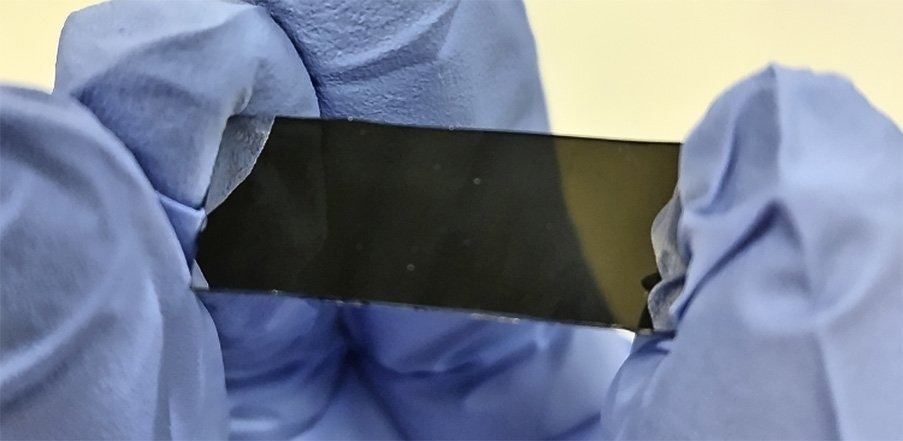In recent years, investigators have been researching special materials known as topological materials, with a focus on the shape, or topology, of their electronic structures (electronic bands). Although not visible in real space, the unusual shape of topological materials yields a variety of unique properties that can be used to create next-generation devices.

Image Credit: Tohoku University
To fully utilize topological physical properties, crystalline materials with highly ordered atoms arranged in repeating patterns were believed to be required. Amorphous materials, in which atoms are disordered and only periodically arranged over short distances, were deemed unfit for hosting the exceptional physical properties of topological materials.
A collaborative research team has now confirmed that these special properties can exist in amorphous materials as well.
Associate Professor Kohei Fujiwara and Professor Atsushi Tsukazaki from Tohoku University’s Institute for Materials Research (IMR), as well as Lecturer Yasuyuki Kato and Professor Yukitoshi Motome from the University of Tokyo’s Graduate School of Engineering and Associate Professor Hitoshi Abe from the High Energy Accelerator Research Organization’s Institute for Materials Structure Science, guided the group.
On June 13th, 2023, the findings were published in the journal Nature Communications.
We discovered that the concept of band topology, which has been discussed mainly in crystals, is also valid and technologically useful in amorphous states.
Kohei Fujiwara, Associate Professor, Institute for Materials Research, Tohoku University
The group conducted experiments and model calculations on iron-tin amorphous thin films to make their discovery. They discovered that, despite the short-range atom arrangement, the amorphous material exhibited the same special effects as crystalline materials, most prominently the anomalous Hall effect and the Nernst effect.
Amorphous materials are easier and cheaper to make compared to crystals, so this opens up new possibilities for developing devices using these materials. This could lead to advancements in sensing technology, which is important for creating the Internet of Things (IoT) where many devices are connected and communicate with each other.
Kohei Fujiwara, Associate Professor, Institute for Materials Research, Tohoku University
The team is eager to discover more amorphous materials and use them to create novel devices.
Journal Reference
Fujiwara, K., et al. (2023). Berry curvature contributions of kagome-lattice fragments in amorphous Fe–Sn thin films. Nature Communications. doi.org/10.1038/s41467-023-39112-1.